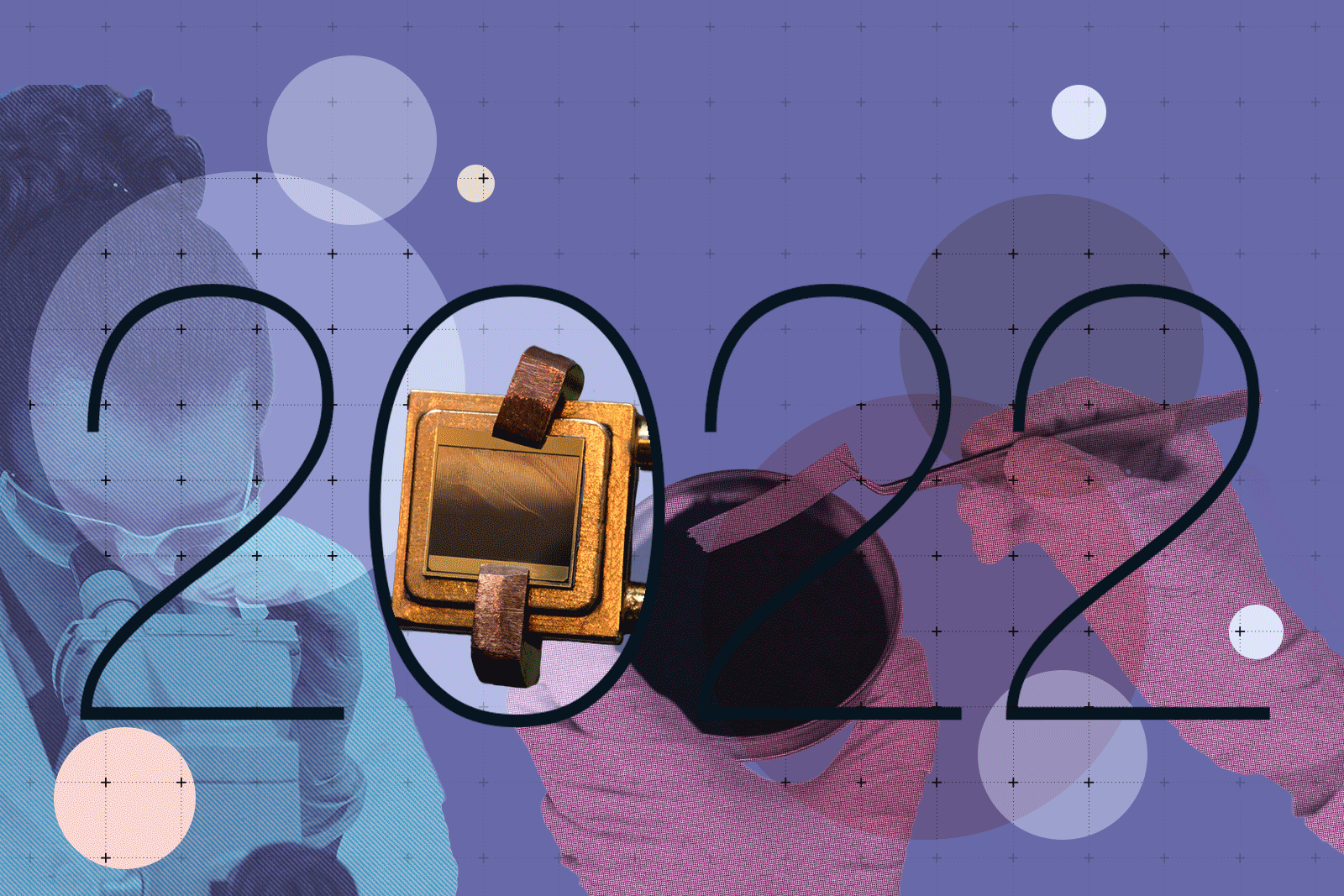The dizzying pace of research and innovation at MIT can make it hard to keep up. To mark the end of the year, MIT News is looking back at 10 of the research stories that generated the most excitement in 2022.
- Designing a heat engine with no moving parts. In April, engineers at MIT and the National Renewable Energy Laboratory (NREL) designed a heat engine that might someday enable a fully decarbonized power grid. In demonstrations, the engine was able to convert heat to electricity with over 40 percent efficiency — a performance better than that of traditional steam turbines.
- Creating a lightweight material stronger than steel. In February, MIT chemical engineers used a new polymerization process to form a material that that is stronger than steel and as light as plastic, and can be easily manufactured in large quantities. The material could be used as a coating for car parts or as a building material for bridges and other structures.
- Enabling portable desalination at the push of a button. MIT researchers developed a suitcase-sized device that can remove particles and salts to generate drinking water. Unlike other desalination units that rely on filters, this device uses electrical power to purify the water. It requires less power to operate than a cell phone charger and can be driven by a small solar panel. Just push start.
- Linking human genes to function. A team of researchers created the first map tying every gene expressed in human cells to its job in the cell. The map, which is available for other scientists to use, makes it easier to study a range of biological questions. The map was created using a CRISPR-based single-cell sequencing method known as Perturb-seq.
- Improving supercomputing with a new programming language. A team of researchers based mainly at MIT invented a faster and more reliable programming language for high-performance computing. The language, which was tested on a number of small programs, could one day help computers with a number of deep learning tasks like image processing.
- Lifting people out of extreme poverty. A study co-authored by an MIT economist showed that a one-time capital boost (in this case, a cow) helped poor people in rural Bangladesh improve their lives in the long run. The study suggests the very poor are in a poverty trap, in which an initial lack of resources prevents them from improving their circumstances, and implies that large asset transfers are an effective way to reduce global poverty.
- Helping robots fly. Inspired by fireflies, MIT researchers created tiny actuators that emit light to allow insect-scale robots to communicate. Weighing barely more than a paper clip, the robots are too small to make use of traditional means of sensing and communication. Instead, the actuators that control the robots’ wings light up in different colors and patterns, which could enable them to do things like share their location and call for help.
- Detecting a radio signal in a far-off galaxy. In July, astronomers at MIT and elsewhere were surprised to find a periodic fast radio burst (FRB) originating billions of light-years from Earth. It is the longest lasting FRB pattern detected to date and is made up of intensely strong radio waves that repeat every 0.2 seconds, similar to a heartbeat. Astronomers suspect the signal is coming from a neutron star.
- Proposal for a new, low-cost battery design. Researchers at MIT developed a battery made from abundant, inexpensive materials to complement the rise of lithium-ion batteries. The new battery uses aluminum and sulfur as its two electrode materials and a molten salt electrolyte in between. It could be ideal for powering single homes or small to medium sized businesses, producing a few tens of kilowatt-hours of storage capacity.
- Immigrants as job creators. A study co-authored by an MIT economist found that compared to native-born citizens, immigrants are about 80 percent more likely to found a firm. The study, which looked at registered businesses of all types across the country, suggests that immigrants act more as "job creators" than "job takers" and play outsized roles in high-growth entrepreneurship in the U.S.


